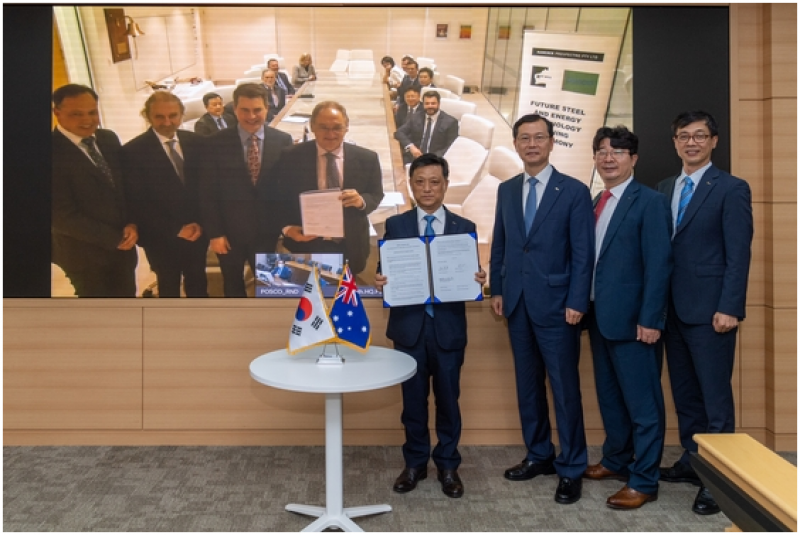POSCO will cooperate with Australian raw material supplier Roy Hill to achieve carbon neutrality.

POSCO announced on Aug. 2 that it will establish a cooperative system with Roy Hill to reduce carbon emissions across its mining and steel businesses.
The two companies will jointly conduct research and develop business opportunities in diverse areas including hydrogen production, hydrogen-based production of hot briquetted iron (HBI), renewable energy, and carbon capture, utilization and storage (CCUS). Hydrogen-based steel production uses hydrogen as a reducing agent. It separates oxygen from iron by using hydrogen instead of carbon monoxide, a conventional reducing agent.
Roy Hill is a large mining company that produces 60 million tons of iron ore a year in Pilbara, northwest Australia. POSCO holds a 12.5 percent stake in Roy Hill and receives 16 million tons of iron ore from Roy Hill annually.
The two companies will jointly develop an optimal HBI production system by combining iron ore from Roy Hill and POSCO’s hydrogen-based steelmaking technology. Currently, furnace operations use coal as a reducing agent to separate oxygen from iron ore, which inevitably generates carbon dioxide emissions. On the other hand, hydrogen-based steelmaking uses hydrogen, instead of coal, as a reducing agent to produce reduced iron without emitting carbon dioxide. HBI refers to reduced iron ore shaped into a shell form.
The two companies will also seek to jointly produce hydrogen themselves. They will produce blue hydrogen by using abundant natural gas in Australia.
In the mid- to long-term, they will consider laying the foundation for production of green hydrogen (hydrogen produced through electrolysis of water based on renewable energy) by utilizing Australia's excellent renewable energy conditions for solar and wind power generation. They will also team up in developing CCUS technology that collects, utilizes, and stores carbon generated during blue hydrogen production.